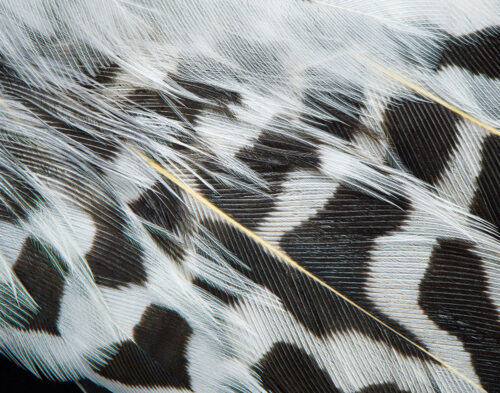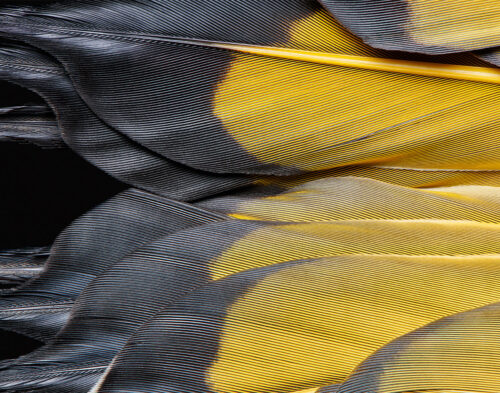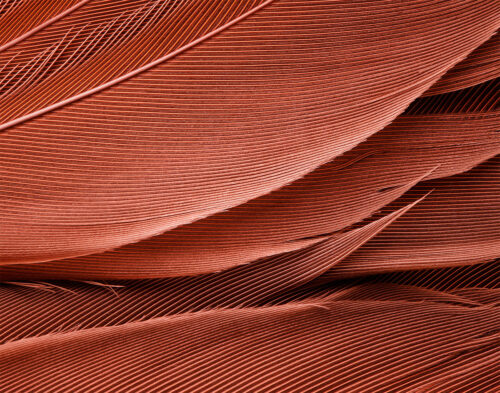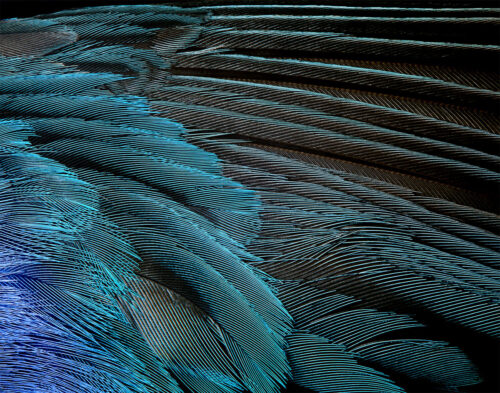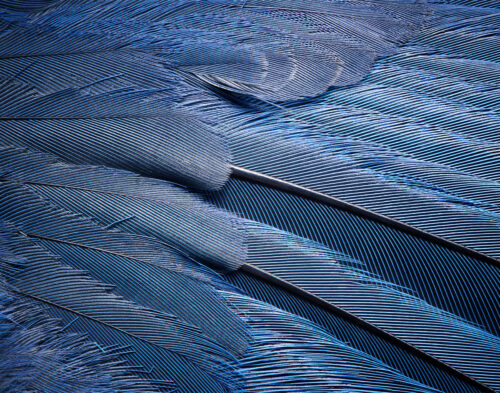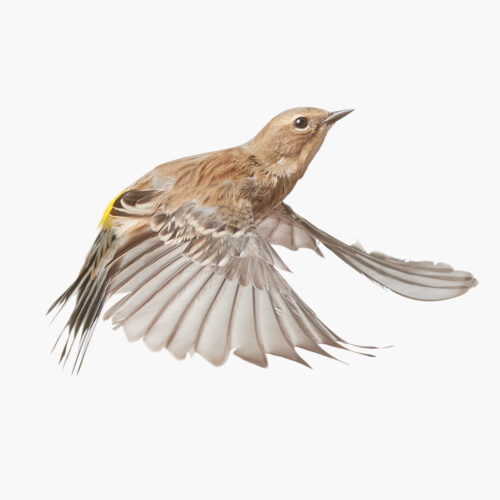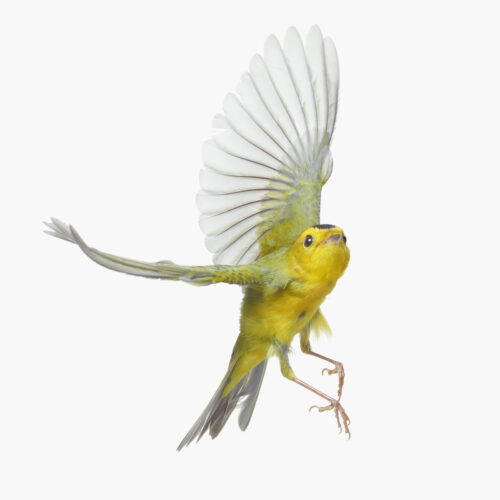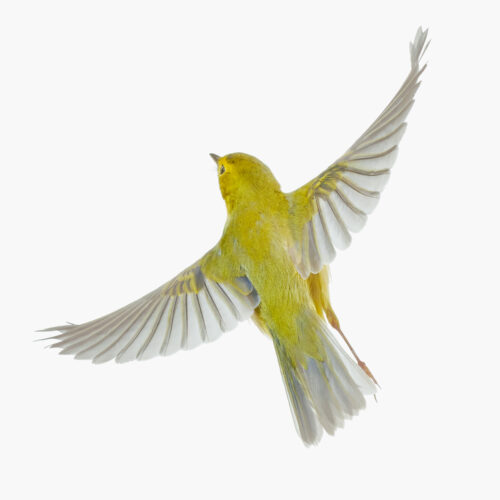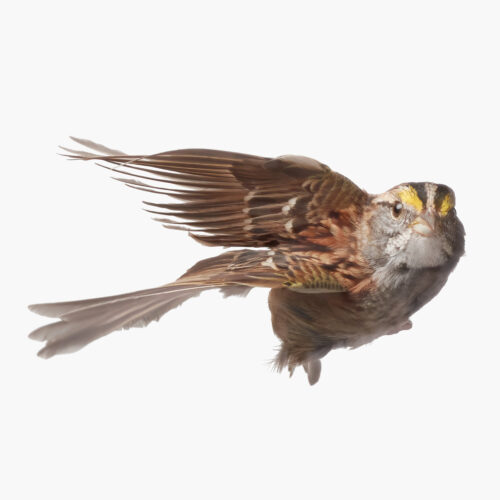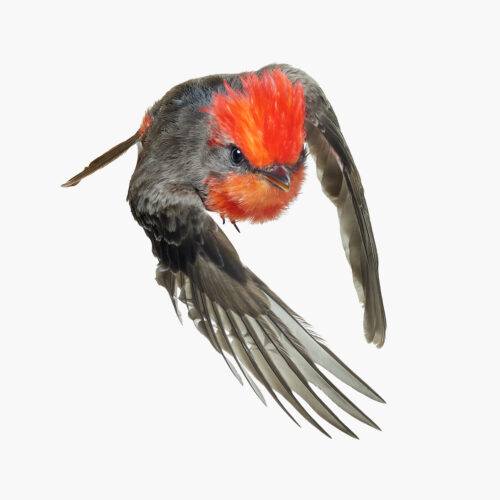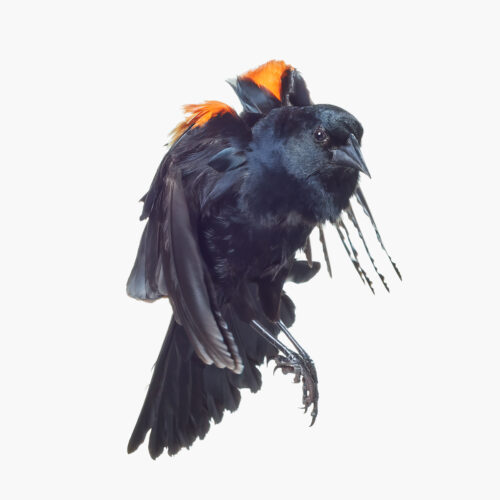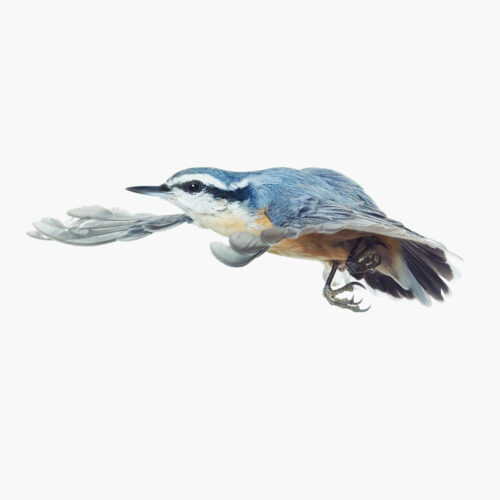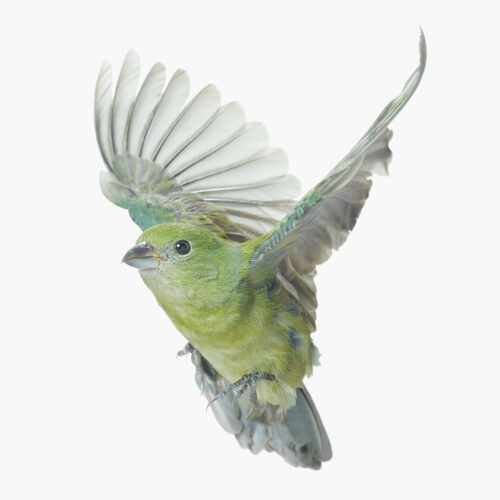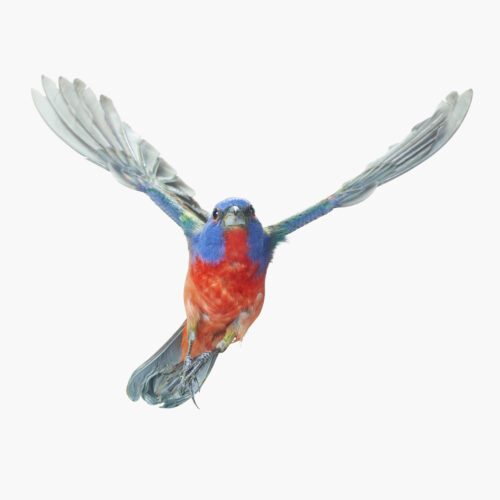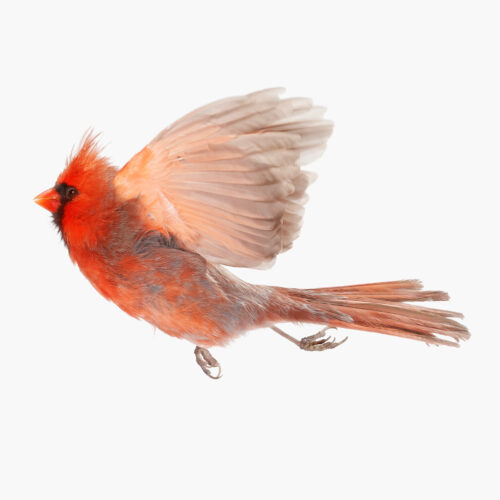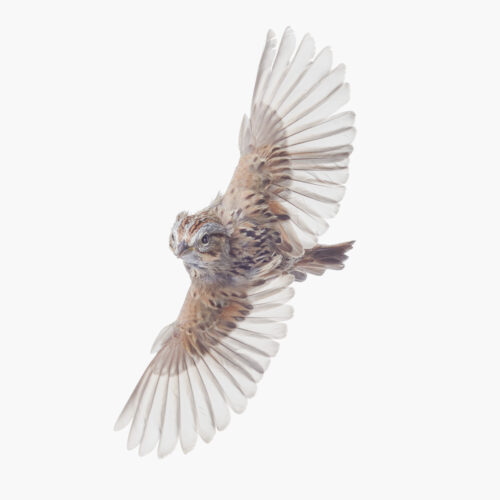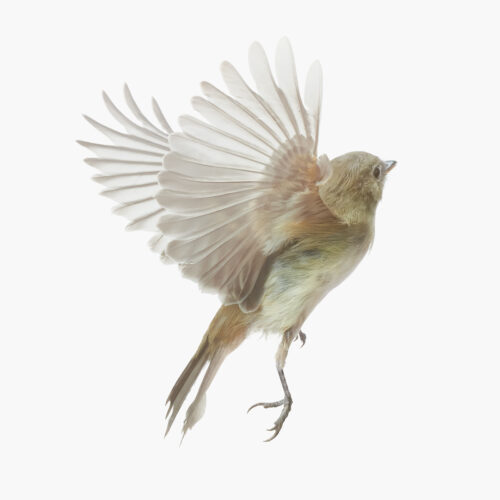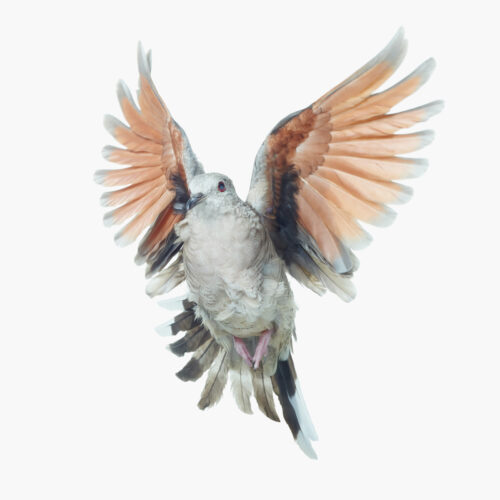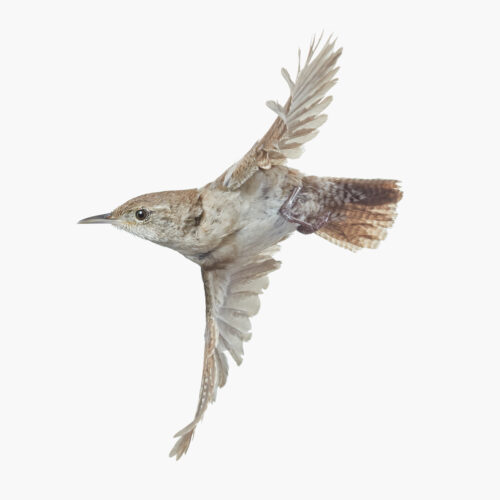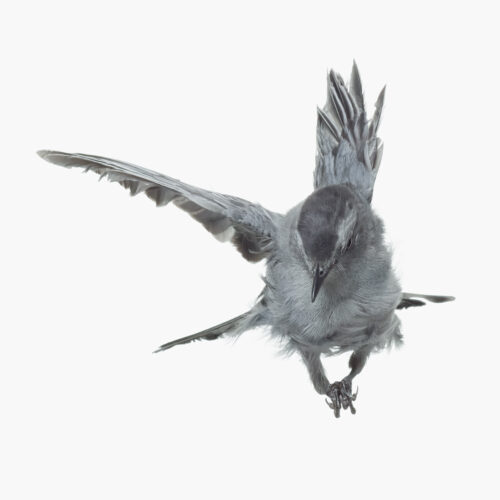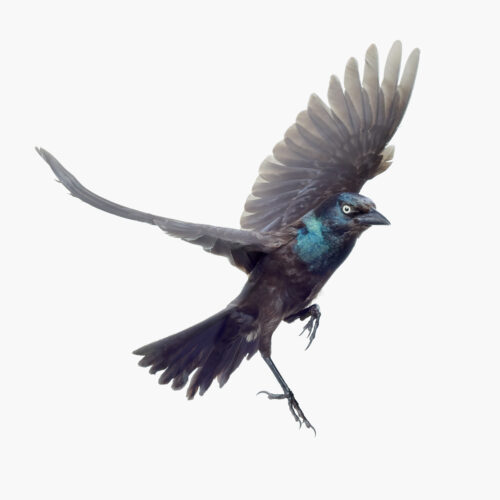Bold yet delicate, the Northern Flicker’s yellow-shafted undertail coverts display a hypnotic dappling of black and white.
“Hard to believe it’s a photograph!” We often hear that. And no wonder. The detail in Wild Birds Flying art prints makes this artwork a source of delight for you and your guests. Art prints, canvas prints, framed prints — there is a range of price and presentation, and so many birds from which to choose. An archival giclée print, a stretched canvas, framed or not — there’s no wrong answer.
-
Northern Flicker-Tail Feathers Print
$90.00 – $1,332.00Arrangement in yellow and black — tail feathers of the Northern Flicker.
-
Northern Flicker-Flight Feathers and Coverts Print
$90.00 – $1,332.00Shades of brown, shafts of yellow — flight feathers and coverts of the Northern Flicker.
-
Northern Cardinal Wing Print
$90.00 – $1,332.00A sweeping vista in red — contour feathers of the Northern Cardinal.
-
Indigo Bunting Wing Print
$90.00 – $1,332.00Shadowy black to intense iridescent blue, Indigo Bunting flight feathers reveal a treasure trove of color.
-
Eastern Bluebird Wing Print
$90.00 – $1,332.00Overlapping waves of blue on blue — flight feathers of the Eastern Bluebird create a quiet calm.
-
Yellow-throated Vireo_001
$42.00 – $1,332.00Colorful and insect-loving, Yellow-throated Vireos pick methodically at forest branches in search of a tasty morsel. Breeding in the eastern half of the U.S., they migrate south into Central America and extreme northern South America. -
Yellow-rumped Warbler_002
$42.00 – $1,332.00The wide-ranging Yellow-rumped Warbler can be found from Alaska to Central America. They favor coniferous forests, but depending on the season, look for them in deciduous forests, shrubby habitats, parks, and maybe even your backyard. -
Yellow Warbler_001
$42.00 – $1,332.00Yellow Warblers — with their buttery yellow hue, rounded head, beady black eyes, and whistled song — can be found across nearly all of North America and into South America. -
Wilson’s Warbler_002
$42.00 – $1,332.00Wilson’s Warblers always seem to be on the move, hopping branch to branch feeding on a variety of insects. The male sports a distinctive black cap, while the female has a paler-colored crown. They nest on the ground or close to it and are found throughout most of the continental U.S. and Mexico, and large parts of Canada. -
Wilson’s Warbler_001
$42.00 – $1,332.00The tiny, insect-eating Wilson’s Warbler sports yellow and greenish plumage and, primarily in the males, a black cap. -
White-throated Sparrow_009
$42.00 – $1,332.00While White-throated Sparrows are common during winter across the eastern and southern United States and California, they breed mainly in Canada. Use sunflower seeds and millet to lure them to your bird feeder. -
White-breasted Nuthatch_002
$42.00 – $1,332.00The blue-gray White-breasted Nuthatch is named so due to its habit of smashing nuts and acorns into tree bark and poking them with its pointed bill to extract the seeds. It may be small, but its loud nasal call is hard to miss. -
Vermilion Flycatcher
$42.00 – $1,332.00Pyrocephalus — the genus for the Vermilion Flycatcher — means “fire-headed,” certainly an apt name for the brilliant-colored male. And “flycatcher”? Yes. These smallish birds (4.8 to 5.4 inches in length) swoop in and catch flying insects on the wing — from flies and wasps to beetles and butterflies. -
Tree Swallow_001
$42.00 – $1,332.00Tree Swallows — a familiar sight from Alaska and Canada to Mexico — like to nest in tree cavities or nest boxes. They feast primarily on insects and occasionally on berries, too. -
Rufous-capped Warbler
$42.00 – $1,332.00With its reddish-brown cap and long tail often raised at an angle, the Rufous-capped Warbler can be found in Mexico and Guatemala, and sometimes into south Texas and Arizona. It feeds primarily on insects and favors weedy, brushy areas near woodlands. -
Rufous Hummingbird_003
$42.00 – $1,332.00Rufous Hummingbirds can be found in southern Alaska down through a large part of the western U.S. and Mexico. Watch out, other hummingbirds! The feisty Rufous is not afraid to chase away even the bigger guys. -
Rufous Hummingbird_002
$42.00 – $1,332.00Rufous Hummingbirds can be found in southern Alaska down through a large part of the western U.S. and Mexico. Watch out, other hummingbirds! The feisty Rufous is not afraid to chase away even the bigger guys. -
Rufous Hummingbird_001
$42.00 – $1,332.00Rufous Hummingbirds can be found in southern Alaska down through a large part of the western U.S. and Mexico. Watch out, other hummingbirds! The feisty Rufous is not afraid to chase away even the bigger guys. -
Rose-breasted Grosbeak_001
$42.00 – $1,332.00Look for the Rose-breasted Grosbeak in woodlands and forest edges. True to its name, the male sports a bright pink patch on its breast and a large triangular bill. -
Red-eyed Vireo_001
$42.00 – $1,080.00In summer, the Red-eyed Vireo resides in forests of the Eastern United States, but heads south to the Amazon basin come autumn. The male can sing his song 20,000 times a day. -
Red-breasted Nuthatch
$42.00 – $1,332.00To deter other birds or predators, the resourceful Red-breasted Nuthatch might apply a sticky layer of tree resin to the entrance of its nest, then avoid the trap by flying directly through the opening. They can climb headfirst down tree trunks or hang upside down from branches while foraging for insects or seeds. -
Painted Bunting
$42.00 – $1,332.00Easy to see why the French name for the Painted Bunting is Nonpareil (“without equal”). But in spite of their eye-popping plumage — red, blue, yellow, green — these seed-eating songbirds don’t flaunt the look, preferring to go unnoticed in deep brush and dense foliage. -
Northern Cardinal_001
$42.00 – $1,332.00With its stunning red color, the male Northern Cardinal is a real showstopper, complemented by the female’s red accents on wings, tail, and crest. Find this flashy songbird across the eastern half of the U.S. and Mexico. -
Lucifer Hummingbird
$42.00 – $1,332.00While the male Lucifer Hummingbird sports a purple throat and long narrow tail, the female complements its green back and head feathers with a buff-colored breast and short tail. Both have the characteristic curved bill. -
Lincoln’s Sparrow
$42.00 – $1,332.00Streaky brown, with a buffy eye-ring, Lincoln’s Sparrows are known to be a bit shy. This medium-sized, insect-eating bird forages near or on the ground — and builds its nest there too. It is named for Thomas Lincoln, who traveled with naturalist John James Audubon on a bird-finding trip to Labrador. -
Least Flycatcher_003
$42.00 – $1,332.00Least Flycatchers feed mainly on insects. Small but feisty, they are territorial and not afraid to let bigger birds know who’s boss. -
Indigo Bunting_001
$42.00 – $1,332.00The bright blue of the Indigo Bunting breeding male is sure to attract attention. And so does its melodious song. The brownish female sees to homemaking duties, building nests and incubating eggs. -
House Wren
$42.00 – $1,332.00Found from Canada to South America, House Wrens love a pile of brush — which provides cover and, with luck, a menu of insects. This relatively plain brown bird is small with a cheerful song, but it’s not afraid to pick a fight with its much larger neighbors. -
Gray Catbird_002
$42.00 – $1,332.00The Gray Catbird, like its relative the mockingbird, can copy the sounds of other species. Its own call brings to mind a cat’s meow. -
Downy Woodpecker_003
$42.00 – $1,332.00The Downy Woodpecker has a fondness for insects and forages not only on tree trunks and branches but also on shrubs and weed stalks. Widespread, this small, black and white bird can be found across most of the U.S. and Canada. -
Dark-eyed Junco_002
$42.00 – $1,332.00Abundant across North America, Dark-eyed Juncos are apt to nest and forage on or near the ground. Their white outer tail feathers flash as they take flight. -
Common Grackle_002
$42.00 – $1,332.00Never ones to be labeled picky eaters, the large, dark, iridescent Common Grackles will feast on insects, seeds, berries, nuts, earthworms, corn and other crops — even garbage. And they are a noisy bunch, roosting in very large communal flocks.

